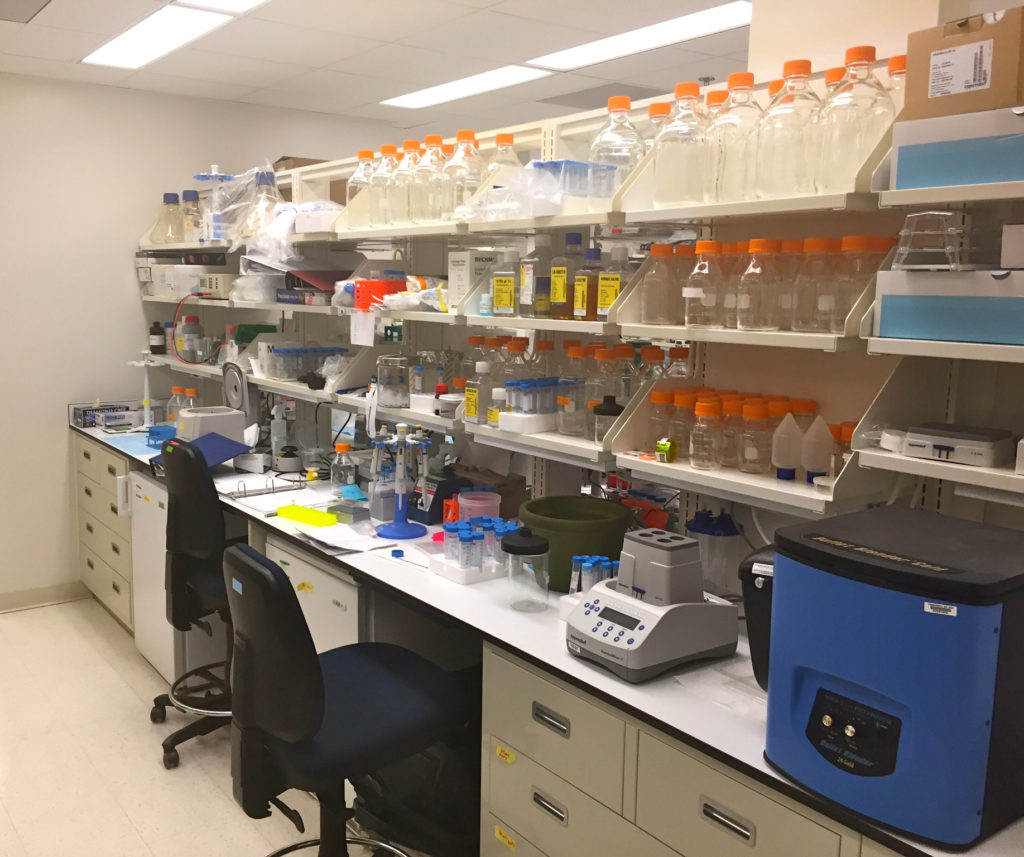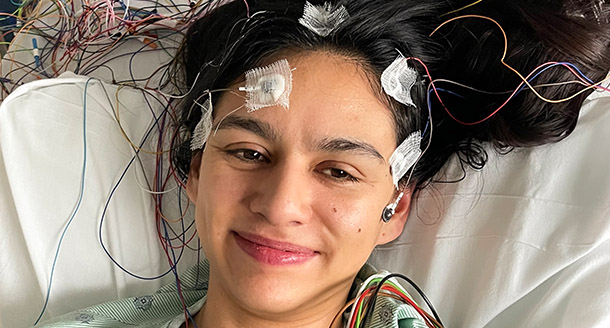> SEE THE JUNE BRAIN TUMOR RESEARCH HIGHLIGHTS
Over the years, NBTS has given more than $32 million to brain tumor research projects. We’re very proud of the impact this funding has made in advancing the neuro-oncology field closer to better treatments and ultimately a cure. And while NBTS is currently focused on driving our flagship research projects – like the Defeat GBM Research Collaborative – forward, there also continues to be great scientific research efforts happening in the neuro-oncology field, en masse. This is critical, as no one researcher, one lab, or one institution can cure this disease alone. Below are highlights of some newly published research from the brain tumor scientific and medical community, compiled by NBTS Director of Research & Scientific Policy, Ann Kingston, PhD and NBTS Research Programs Associate, Amanda Bates:
Contrast-Enhancing Tumor Growth Dynamics of Preoperative, Treatment-Naive Human Glioblastoma: Ellingson BM, Nguyen HN, Lai A et al (2016) Cancer 122, 1718-1727; doi: 10.1002/cncr.29957
> View the paper (PDF)
Little is known about the natural growth characteristics of glioblastoma before surgical or therapeutic intervention, because patients are rapidly treated after preliminary radiographic diagnosis. Understanding the growth characteristics of untreated human glioblastoma may be useful for understanding how these tumors change in response to therapy. The objective of this study was to explore tumor growth characteristics in a group of patients with untreated glioblastoma before surgical or therapeutic intervention. The researchers used magnetic resonance imaging (MRI) to calculate tumor growth rates in a number of ways using “bidirectional product” (commonly used for response evaluation in clinical trials), disease volume (proportion of tumor which shows up as enhancing image), and total lesion volume (enhancement plus central necrosis). The study included 159 patients with histologically confirmed, newly diagnosed, untreated glioblastoma who had at least two magnetic resonance imaging (MRI) scans obtained before surgery, radiation therapy, or chemotherapy, separated by at least 7 days. Of the 159 patients who had imaging data available, in total, 95 patients (approximately 60%) had measurable disease on MRI at more than two time points. The results show that the median time for tumor volumes to double was approximately 21.1 days, with a median rate of percentage change in tumor volume of around 2.1% per day and the rate of change in total lesion volume was 0.18 cc per day. These results suggest that the optimal follow-up between MRI examinations should be >28 days to reliably identify progressive disease with high specificity.
*This research was supported by a National Brain Tumor Society Research Grant (to Benjamin M. Ellingson and Timothy F. Cloughesy),
Multimodal MRI features predict isocitrate dehydrogenase genotype in high-grade gliomas: Zhang B, Chang K, Ramkissoon S et al (2016) Neuro-Oncology; 0, 1–9, doi:10.1093/neuonc/now121. First published online: June 26
> View the paper
Determining the presence of an IDH mutation in a tumor is of considerable significance in the diagnosis and clinical management of glioma patients. In this study, a non-invasive approach to predicting IDH mutation status in high-grade gliomas (WHO III-IV) was studied by investigating the association between radiographic imaging and genomic features of tumors. Preoperative MRIs were obtained for 120 patients with primary grades III and IV glioma, and IDH genotype was confirmed by a number of methods including immunohistochemistry, spectrometry-based mutation genotyping (OncoMap), or multiplex exome sequencing (OncoPanel). Cases were randomly assigned to either “training” or “validation” groups. Using a wide variety of 2970 imaging features including size, shape, texture, volume and others, the researchers applied computer learning based algorithms and statistical methods to narrow/split the imaging features into groups to come up with a prediction of IDH mutation status. Among the top features identified as predictive of mutation status, age was the top characteristic with other features relating to parametric intensity, texture, volume, and shape features contributing to a high accuracy of prediction. These results highlight the potential for imaging to non-invasively predict genomic and pathological characteristics of a tumor without requiring surgical approaches to collect biopsy.
Cancer Metabolism as a Central Driving Force of Glioma Pathogenesis: Masui K, Cavenee WK, and Mischel PS (2016) Brain Tumor Pathol 33: 161. doi:10.1007/s10014-016-0265-5
> View the paper
This review brings together the recent advances in basic research that underline the importance of metabolic changes in driving growth of both low- and high-grade glioma tumors. The review describes a set of recent discoveries on cancer metabolism driven by IDH mutation and mutations in receptor tyrosine kinase (RTK) pathways, highlighting the integration of genetic mutations, metabolic reprogramming, and epigenetic (chemical changes in the DNA and histone proteins that can regulate gene expression, development, tissue differentiation) shifts, potentially providing new therapeutic opportunities. The research shows that tumor cell metabolism deeply effects tumor development, progression, and response to therapy. Specifically, there is recent evidence suggesting that cellular metabolism of IDH-mutated low-grade glioma is linked to changes in the epigenome. In IDH wild-type glioblastoma, metabolic reprogramming is controlled by hypoxia (low oxygen) and RTK dependent c-Myc (a multifunctional, nuclear phosphoprotein that plays a role in cell cycle progression, apoptosis and cellular transformation), upregulation that can cause changes in tumor cell metabolism and cause resistance to therapeutics. IDH mutation status has been linked to the methylome (markers that alter gene expression and protein production), transcriptome (the RNA sequences in the cell which lead to protein formation, regulate genes, or influence cell structure), and functional copy number variations (repeats of sections within the genome). Further studies are still needed however, to determine precisely how genetic mutations specific in each glioma type can facilitate cancer metabolic reprogramming, and how at the same time, extracellular nutrients modulate oncogenic signaling, to translate these insights into more effective treatments for glioma patients.
*Research reviewed in this paper was supported by a grant for the Defeat GBM Research Collaborative from CURE GBM LLC, a subsidiary of the National Brain Tumor Society
If you want to help fund research for new and better treatments for brain tumors – and ultimately a cure – please consider making a gift.




